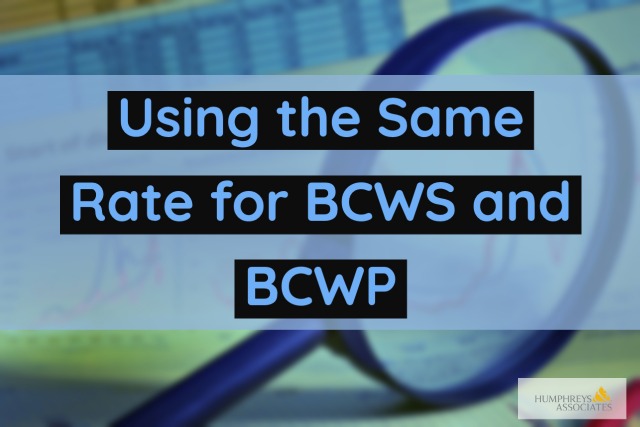

Example #2 below illustrates a very common scenario. In this example work that was planned in November and December was not completed until the next year. In January, the rate increased from $100 to $105. What should the BCWP in dollars be for both January and February?

For both January and February, the original 10 hours planned was earned at $105/hour equaling $1,050. The work that was planned in November and December, but completed late in January and February, was earned at its planned rate of $100/hour resulting in $1,000 of BCWP. The sum ($1,050 + $1,000) equals the BCWP of $2,050 in each month. See the Example #3 graphic below:

Even though the rate was escalated in the new year, the BCWP that should have been earned in the prior year is calculated using the rate that was originally planned. The same approach would be logical if the work planned at $105 per hour were performed ahead of schedule in let us say, December of the prior year. It would be earned at $105 per hour even though it was performed in a time frame where the planning rate is $100 per hour. In some instances, business systems are programmed to earn as a percent of the entire Budget at Completion (BAC). This could result in an inaccurate BCWP dollar value. As an example, let us assume 10 hours are earned in September. If those 10 hours were 1/8 of the total BAC, then the BCWP dollars associated with this 10 hours would be $102.50 per hour and the contractor would be earning too much for those 10 hours. They must earn at the planned $100 per hour! Thus the rate used for BCWP is the same as for BCWS and is compliant with Guideline 22; one earns in the same manner as they plan to earn.
In summary, EVM concepts require that in order for the work to be complete, cumulative values of BCWS and BCWP must equal the BAC. So, from a common-sense standpoint, if BCWP is earned at a different rate than that used for planning the BCWS, the Control Account (or even the Contract) cannot be closed properly. Examples:
- If BCWP earns at a lower rate, the BCWP would be, say, 98% of the BAC when the actual work is done.
- Likewise, if BCWP earns at a higher rate, the BCWP would be, say, 105% of the BAC when the actual work is concluded.
Both of these scenarios violate the EVM concepts.

Pingback: Aligning ACWP with BCWP for Proper Earned Value Management
Knowing the period the performed work was budgeted would be very difficult, if not impossible. Work packages are not planned in monthly buckets. They may straddle two or more report periods; they may be performed ahead of/behind/on schedule; the method of accomplishment may not be the same as planned. To try to price the work performed for a given month would be too onerous. Surely there’s a better way. The commercial programs apply the same percentage to each element – hours and dollars. Let sleeping dogs lie.